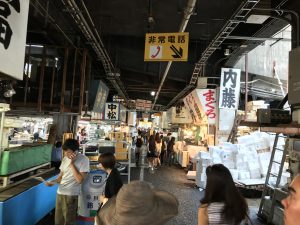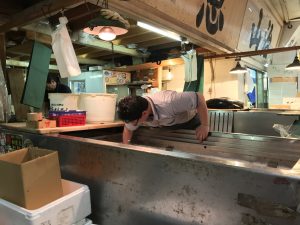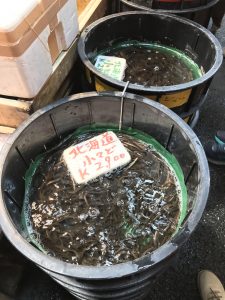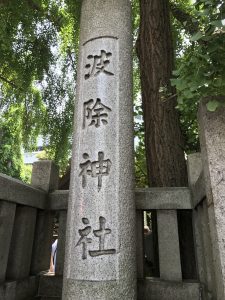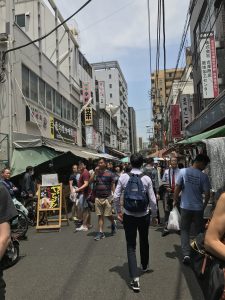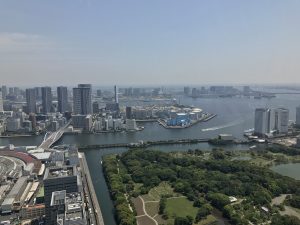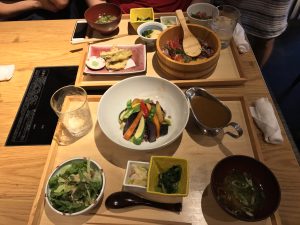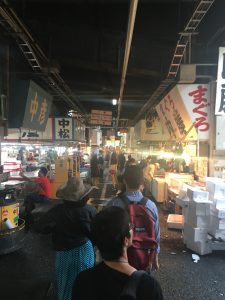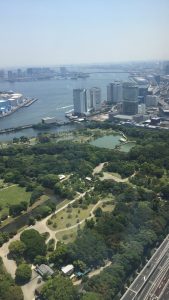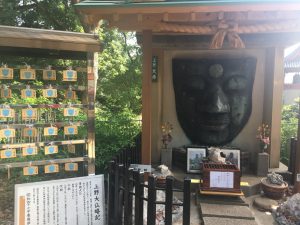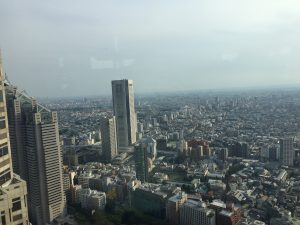Wow, I’m exhausted! We got a little lost on the way back to the AirBnb and in general there was a lot of さんぽう (walking) in my not-so-comfortable-but-professional shoes today. But that’s okay because we got to experience some amazing things today!
Kanpō is not as traditional as it seems. Our first adventure included a meeting with Dr. Qiu, a Kanpō doctor located in Tokyo and specializing in gynecology. I have to say thank you to Selinger 先生 for wonderfully translating what Dr. Qiu had to say because there was no way I would have understood otherwise. ありがとおございました!She thoroughly answered our questions, with the first batch being ones we sent to her prior to the meeting. Some highlights include the difference between Kanpō in China vs. Japan, how she views Kanpō, and the kinds of patients she has treated/is treating. The route in China is to start off studying Kanpō (specialized), whereas in Japan, those hoping to pursue Kanpō go first to medical school (generalized) and then specialize in a topic. She explained that Kanpō is an observational science, meaning that a Kanpō doctor “observes the signs of the hypothetical illness… and views the body as a homeostatic balance with the environment.” Okay, I have to say, that as someone who studies science, all science is observational… there are no facts in science… you support conclusions based on evidence… すみません, I just wanted to comment on the redundancy of “observational science,” but maybe I’m just being too picky? Her practice appears to be doing very well, as she reported lots of success stories (of course, I want to hear about the stories that were not so successful but alas I felt that was too inappropriate to ask). She also talked about Kanpō literature going as far back as 681 years ago, so there is definitely validity in what she is doing; I felt the need to say this because in America there is a stigma against non-Western medicine.
Anyway, I love that Kanpō is so holistic in its treatment style. When the question about whether race matters in treatment, Dr. Qiu explained that what actually is more important is what the patient’s environment is like. It’s the diet, emotion, geography, home life, etc. that are considered, which is in contrast to Western medicine where you either check off boxes and concentrate on what specifically is wrong. When I think about what I learned in my microbiology class this past semester, it makes sense to me that a patient’s illness is not an island. Not only genetics, but also your diet, where you come from, who you’re around, etc all play into what makes up your microbiome, which can affect how your immune system functions. Obviously I do not know if this is the case at all, but I can see there being evidence as to why environment matters. Psychology also seems to play some magical part into this, and that can probably never be backed up by science (at least in the near future), but nonetheless it is there (the placebo effect is real!).
After doing the reading The East Asian Medical System in Urban Japan: Kanpō, Dr. Qiu’s story seems so unique. I had the impression that most Kanpō doctors in Japan were male, Japanese, carried medical degrees, wore lab coats, and practiced in a Western-like clinic (including the use of modern technology like X-rays). Our visit today was nothing like that, as her practice did not look or feel like a clinic in America. The room had an herbal aroma (not “sterile”-smelling or looking), and that was also reinforced by the shelves lined with glass jars containing herb sundries. There was no white; the color palette of the room contained almost exclusively earth tones. Dr. Qiu was also wearing a beige “Chinese” (eh, is it okay to say this? Does it help that I’m Chinese? And that Dr. Qiu is Chinese? I mean no offense) outfit and there was no stethoscope or much equipment in sight. I was too timid to ask about how unique her practice is 🙁 .
Next stop was the Edo-Tokyo Museum! What an entrance. Like my goodness, that behemoth of a building does not look like a museum about the ordinary.
How interesting it is for the government to portray the “everyday citizen” in a museum. Hence, the faux-holistic reference in my title. The government tells the public that this is what people were like back when, yet it is obviously bias because the people are not the ones telling their stories nor are all the people being represented. NEED TO EDIT CAUSE NEED TO SLEEP.
I find the bathrooms so intriguing here. In the train station of all places (a place I would expect to have dirty/unkept bathrooms), there was a small changing platform next to the toilet. Along with sanitizer for the toilet seat and a water level such that the sound of your pee is nonexistent.
People wear so much fabric for it being so humid and hot. Every time we walk on the street and through a train station, I am in awe of how everyone is dressed. Sleeves and pants galore!! Hawaii gets to similar weather as this, but people reveal way more skin there.
P.S. Click on my name because I just updated my author bio!

